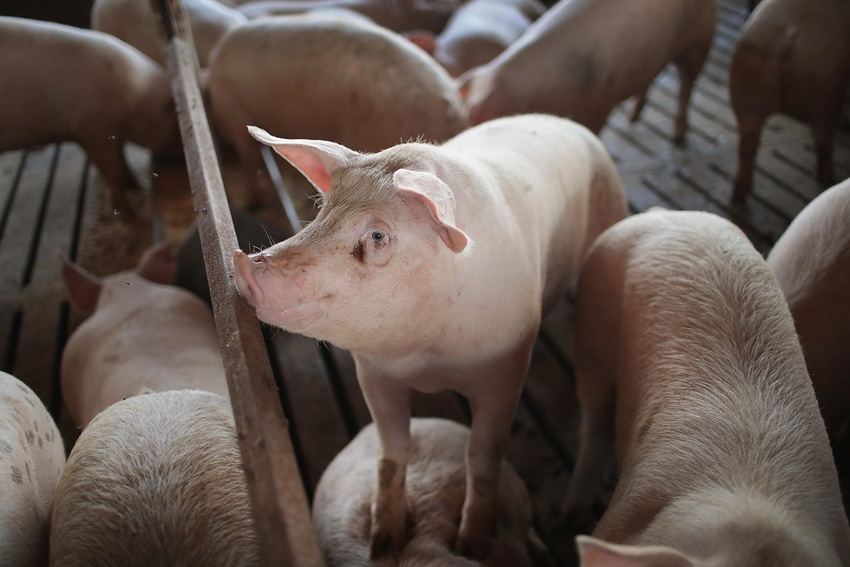Energy is not energy, at least not to a pig
To understand energy, we need to measure protein, fat, fiber and starch, because they all supply energy, and the pig uses each one differently.
June 20, 2019

By John F. Patience and Amy Petry, Iowa State University
It is a real challenge to try to understand how to best supply energy to the pig, and then understand how the pig will use that energy. This is an important topic, because energy is by far the most important constituent of the diet, and because energy has such a big impact on pig performance.
But energy is different from nutrients in the diet. For example, to understand lysine, we measure lysine in the diet, because all lysine in the diet is supplied by lysine. To understand phosphorus, we measure phosphorus in the diet because all phosphorus in the diet is supplied by phosphorus. But to understand energy, we need to measure protein, fat, fiber and starch, because they all supply energy. To complicate things further, the pig uses each one differently. For example, the pig uses the energy supplied by fat with 90% efficiency if deposited in the body as fat, but with only 66% efficiency if used to deposit lean. As another example, the pig uses the energy supplied by fiber with 62% efficiency if used to deposit fat in the body but with only 50% efficiency if used to deposit lean. So, it is pretty clear that not all energy is the same — certainly not from the pig’s perspective.
What does this mean in practice? Let’s look at where the energy comes from in a typical diet based only on corn and soybean meal, and compare that to a diet of equal net energy content but based on corn and soybean meal with 20% distiller’s dried grains with solubles included. In this example, the corn-soy diet will contain about 8.4% neutral detergent fiber and the corn-soy-DDGS diet will contain about 12.7% NDF. Table 1 summarizes where the energy is coming from in these two diets. Remember that they both contain the same total amount of net energy.

In this example, the proportion of energy coming from starch declines from 68% to 60% when 20% DDGS are included in the diet. At the same time, the portion of energy coming from protein increases from 17% to 20%, and from fat increases from 14% to 18%. In both instances, the proportion of energy coming from fiber remains very, very low. Since we know that the efficiency with which energy is utilized differs among sources, this exercise tells us that we need to proceed carefully when we change the makeup of the diet, especially when we change the proportions of the suppliers of energy: protein, fat, starch and fiber.
Let us now look at a more extreme example, where we change from a diet based only on corn and soybean meal to one which contains 20% DDGS, 10% corn bran and 10% wheat middlings. In this instance, NDF increases from 8.5% to 17.6% — about a two-fold difference. Table 2 summarizes where the energy is coming from in these two diets. Once again, they both contain the same total amount of net energy.

Just as in the previous example, the portion of energy supplied by each constituent of the diet changes, and in this instance, because the alternate diet is more extreme, the changes are greater in magnitude. The portion of energy coming from starch declines from 71% to 54%, and the portion from protein increases from 14% to 18%. The portion of energy coming from fat almost doubles, from 14% to 26%; once again, the quantity of energy from fiber remains small.
The net energy system does the best job of accounting for differences in the efficiency of use of energy supplied by different energy sources, but even it cannot account for the dynamic changes occurring when the dietary energy is used for different purposes, e.g. lipid deposition versus lean deposition. If these do not change, and if all other things remain the same, then the performance of the pigs should be as expected. But if there is a change, say in the ratio of fat:lean deposited, or there is a change in the portion of energy going to maintenance rather than gain, we might encounter unexpected results.
This approach is one more tool available to nutritionists to understand the composition of the diets they are formulating, and the impact of changes in formulations on expected performance. Graduate student Amy Petry has developed an Excel spreadsheet to carry out this calculation. It is available to anyone who wants to apply this concept to their diets. Simply email John Patience and request the energy profile tool.
Sources: John F. Patience and Amy Petry, who are solely responsible for the information provided, and wholly own the information. Informa Business Media and all its subsidiaries are not responsible for any of the content contained in this information asset.
You May Also Like



